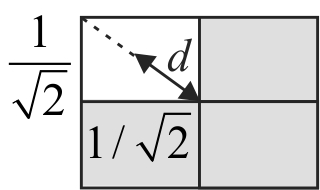365745
Assertion :
The centre of mass of two particle system lies on the line joining the two particles, being closer to the heavier particle.
Reason :
This is because product of mass of one particle and its distance from centre of mass is numerically equal to product of mass of other particle and its distance from centre of mass.
365745
Assertion :
The centre of mass of two particle system lies on the line joining the two particles, being closer to the heavier particle.
Reason :
This is because product of mass of one particle and its distance from centre of mass is numerically equal to product of mass of other particle and its distance from centre of mass.
365745
Assertion :
The centre of mass of two particle system lies on the line joining the two particles, being closer to the heavier particle.
Reason :
This is because product of mass of one particle and its distance from centre of mass is numerically equal to product of mass of other particle and its distance from centre of mass.
365745
Assertion :
The centre of mass of two particle system lies on the line joining the two particles, being closer to the heavier particle.
Reason :
This is because product of mass of one particle and its distance from centre of mass is numerically equal to product of mass of other particle and its distance from centre of mass.




